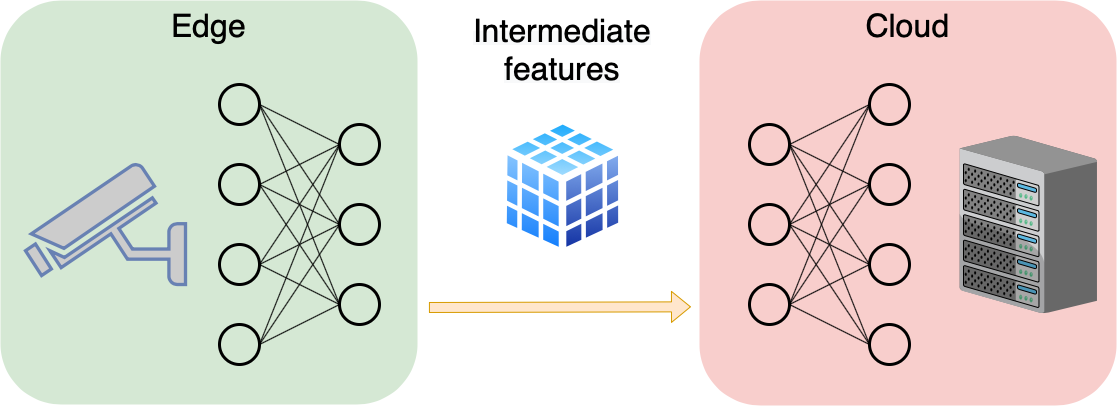v1.0 of this library (including complete examples) will be published soon.
Please check back by the end of this month!
Collaborative intelligence is a technique for using more than one computing device to perform a computational task. A possible application of this technique is to assist mobile client edge devices in performing inference of deep learning models by sharing the workload with a server. In one typical setup, the mobile device performs a partial inference of the model, up to an intermediate layer. The output tensor of this intermediate layer is then transmitted over a network (e.g. WiFi, LTE, 3G) to a server, which completes the remaining inference, and then transmits the result back to the client. Such a strategy can reduce network usage, resulting in reduced bandwidth costs, lower energy consumption, faster inference, and provide better privacy guarantees. A working implementation of this was shown in our demo at NeurIPS 2019. This year, we present a library that will enable researchers and developers to create collaborative intelligence systems themselves quickly and easily.
This demo presents a new library for developing and deploying collaborative intelligence systems. Computational and communication subprocesses are expressed as a directed acyclic graph. Expressing the entire process as a computational graph provides several advantages including modularity, graph serializability and transmission, and easier scheduling and optimization.
Library features include:
- Graph definition via a functional API inspired by Keras and PyTorch
- Over-the-network execution of graphs that span across multiple devices
- API for Android (Kotlin/Java) edge clients and servers (Python)
- Integration with Reactive Extensions (Rx)
- Asynchronous execution and multi-threading support
- Backpressure handling
- Modules for network transmission of compressed feature tensor data
